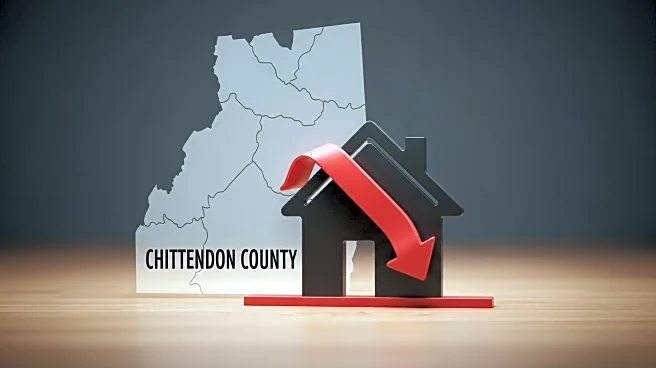What's Happening?
In Boone County, Illinois, the median home listing price rose to $339,900 in August, marking a 5.3% increase from the previous month. This rise is part of a broader trend observed across the Rockford metro area, where median home prices fell slightly to $250,000. Boone County homes, averaging 2,001 square feet, were listed at $161 per square foot, up 10.4% from August 2024. The local housing market saw a decrease in new listings, with 52 homes newly listed in August, down from 60 the previous year. The median time homes spent on the market was 32 days, faster than the national median of 60 days.
Why It's Important?
The increase in home listing prices in Boone County reflects broader trends in the U.S. housing market, where prices have generally been rising. This trend can impact affordability for potential buyers, influencing their ability to purchase homes. The faster turnover rate in Boone County suggests strong demand, which could lead to further price increases. These changes in the housing market can affect local economies, as higher home prices may lead to increased property taxes and influence consumer spending. Additionally, the decrease in new listings may indicate a tightening market, potentially driving prices higher.
What's Next?
As the housing market continues to evolve, potential buyers in Boone County may face challenges in finding affordable homes. The trend of rising prices and decreasing new listings could lead to increased competition among buyers. Local real estate agents and developers may need to adapt their strategies to address these changes, potentially focusing on new construction to meet demand. Additionally, policymakers may consider measures to improve housing affordability, such as incentives for first-time buyers or initiatives to increase housing supply.
Beyond the Headlines
The rising home prices in Boone County may have broader implications for social and economic dynamics in the area. As affordability becomes a concern, there could be shifts in demographics, with younger families or lower-income individuals potentially moving to more affordable regions. This could impact local schools, businesses, and community services. Additionally, the housing market trends may influence investment decisions, with investors potentially seeking opportunities in areas with rising property values.










